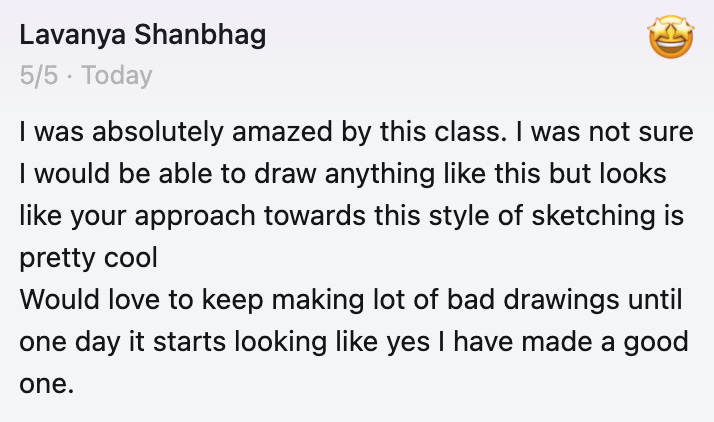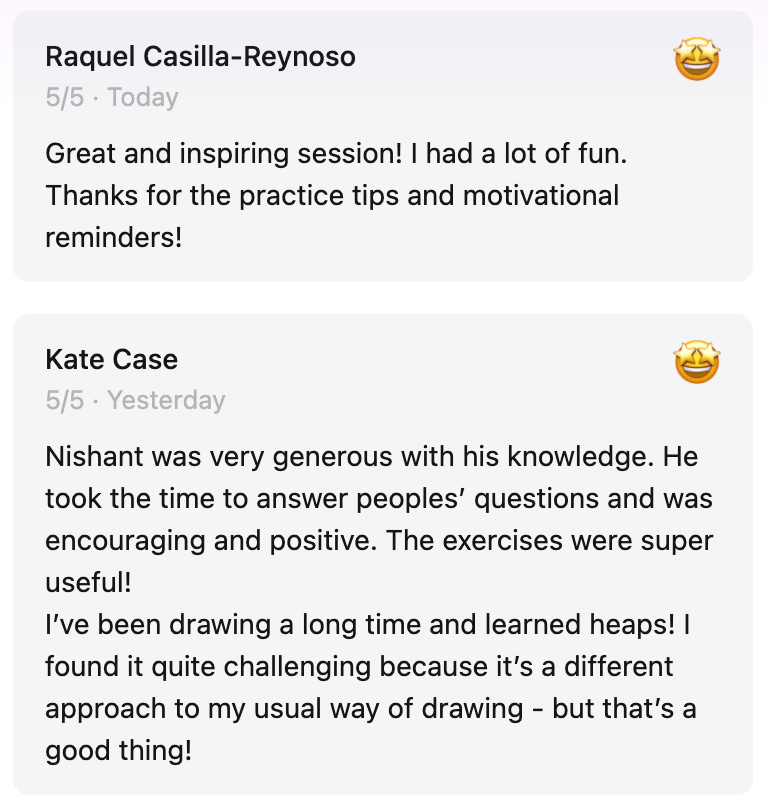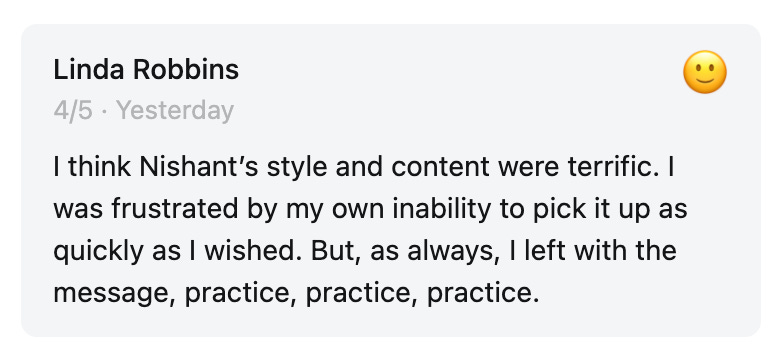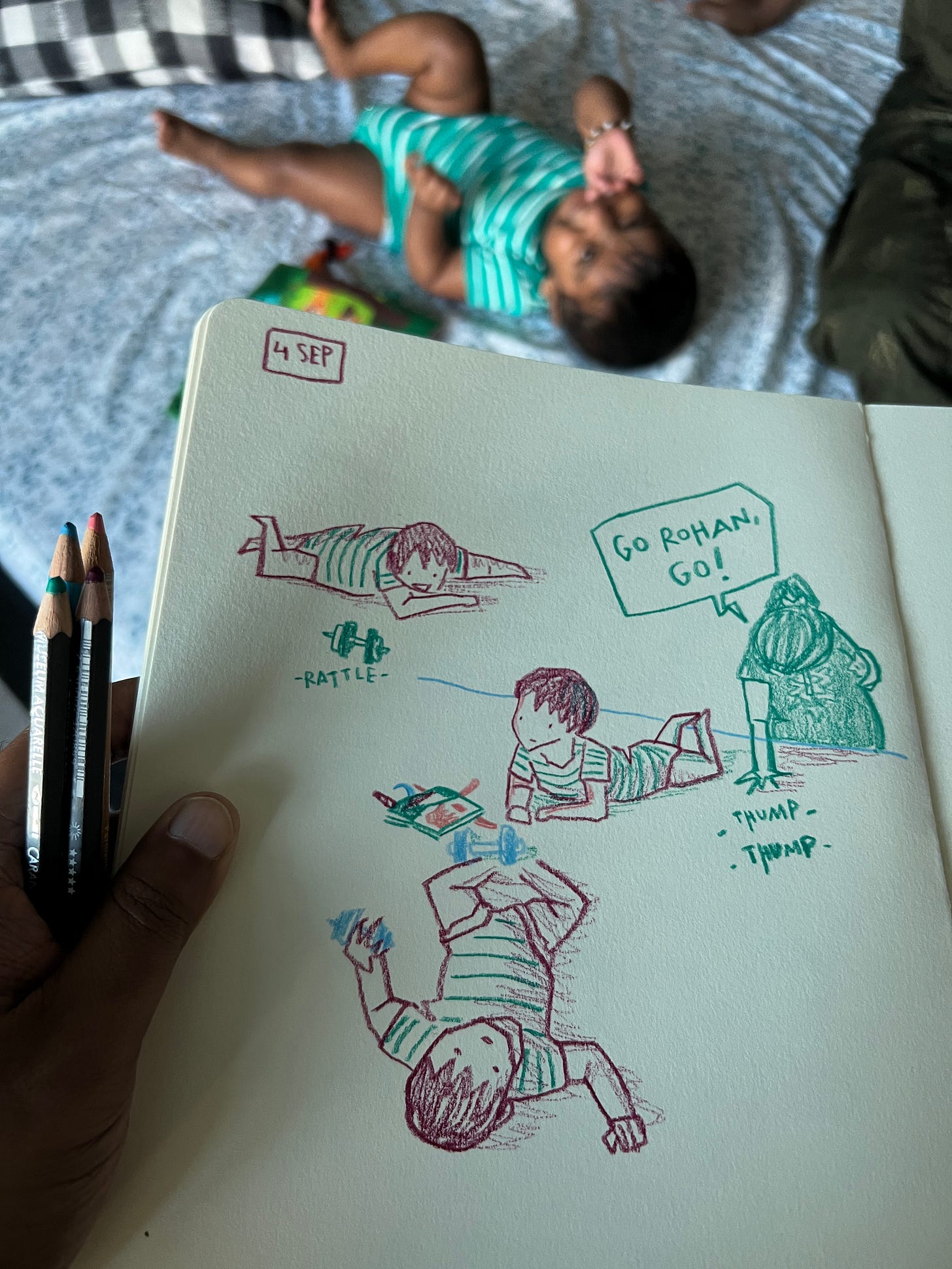Can you Trust the Great Automatic Grammatizator to Care about You-You?
Insider #150 to celebrate the 150 times you supported my work.
Dear reader,
This is the 150th email I am writing to paid subscribers of this little publication. Subscriptions on the SneakyArt Post began about 3 years ago, and now there are a few hundred of you that support and sustain my work. Thank you!
To begin, these posts went out to paid subscribers only. I believed that I needed to keep my best ideas behind a paywall as a ✨smart marketing strategy✨ to create value for subscriptions. But over time I realized I do not like paywalls. I am not smart about marketing, I guess?
If you believe artists should not need to be smart about marketing, maybe become a SneakyArt Insider? (No pressure.)
Today, subscriptions help me share my best work with all readers. In this final quarter of the year, I am doing many new things that will scare me, challenge me, and help me grow. Subscriptions help me follow my own compass, even where there is no path, no lights, and brambles underfoot.
💻 Yesterday, we drew many tiny people
Nearly a hundred people signed up for yesterday’s workshop to learn how to draw tiny people. But, as I said in the workshop, the goal is not only to become better artists! Drawing the people of your world is a way to be a better observer of your environment, to appreciate beauty in urban spaces, to acknowledge our shared humanity in this world we share. I believe it is a way to be more human.
Big thanks to everyone that signed up, and even bigger thanks to the people who left me feedback overnight. I woke up to these lovely messages!
🎟️ The next session is the monthly FREE hangout with readers on Sep 13. Sign up for a chat about art materials, and a sketchbooks tour from 2017 to today!
❤️ The Best Words
Writing to paid subscribers has helped me shift attention away from media trends, clout-chasing, and predatory algorithms. I have had the time, attention, and incentive to produce some of my best words and best lines:
📬 I love to give away drawings! Last year I was able to give many drawings to readers, and leave art for strangers to find in public spaces.
🐣 After the birth of our son earlier this year, I turned to Insiders to sanction my parental leave. And you were so generous with your support!
🤳🏼 A few months ago, my Instagram account suddenly blew up. After the dust settled, I reflected on what it means to have a huge, global audience (spoiler alert: not all of it is good news).
🖼️ Drawing people at the MoMA (in New York), I wondered why people bother to see art in person when everything is digitally accessible. Over 99% of people who like my work will only see it on their screens! Curiosity led me to an essay from 1936, and thoughts about the role of art in the age of virtual reproduction.
📖 My sketchbook habit began as a way to learn to draw, while exploring my new world as an immigrant. Along the way, I realized sketchbooks have much more to teach than mere drawing!
🎤 I consider myself an introvert, in that I will go to great lengths to avoid talking to people. But there is a switch inside me that, when flipped, lets me climb onto a stage, grab a mic, and smooth-talk for as long as necessary. I pushed out of my comfort zone and flipped the extrovert switch at a PechaKucha Nights event in Vancouver.
📚 Five years ago, I self-published my first book of SneakyArt. I had good reasons to do it, and it has done great things for me. I think you should self-publish too!
🎂 Rohan turned 7 months this week!
How did we decide to become parents? How did we ever think not to? Memory is a blur. The old life is a mirage. The little demon plays tricks on us. We serve and obey his Royal Cuteness. (Send help. But don’t.)
🤖 The Artifice of Artificial Intelligence
Recently, Ted Chiang (one of my favourite futurist authors) published an essay in the New Yorker about “Why AI isn’t going to make Art”. It is worth your time to read it.
It begins with a reference to Roald Dahl’s amazing short story - The Great Automatic Grammatizator - about an engineer who constructs a calculating machine to produce stories in mere minutes, simply by following the mathematical rules of grammar and syntax. I read this story a long time ago. More recently, I read about a similar (but more human-powered) phenomenon in Italo Calvino’s mind-bending novel If on a Winter’s Night a Traveller. What is authorship, it makes you wonder. And then, sneeringly, it asks - who cares about reality?
(They are both great writers, as is Ted Chiang. Please read them.)
Below are some highlights from the New Yorker essay, set against my own post on the subject shared at the end of last year.
Art is notoriously hard to define, and so are the differences between good art and bad art. But let me offer a generalization: art is something that results from making a lot of choices. - Ted Chiang.
Making hard, deliberate choices is what makes you the writer, says Chiang. When those choices are surrendered to the machine, you surrender also to the average-ness of its outputs. He refers to average-ness as emerging from the mushing together of all the data of the world. I contend that average-ness is also the definition of infinite ease of production. No matter its supposed quality, if it is a zero-cost endeavour, it becomes the new average, the mid, the thing of no value.
Last December, I wrote: “Anything that can be produced at zero cost by anyone anywhere in the world is – by definition – mid.”
***
The companies promoting generative-A.I. programs claim that they will unleash creativity. In essence, they are saying that art can be all inspiration and no perspiration—but these things cannot be easily separated. - Ted Chiang.
In December, I wrote that making art is the most intensely human thing you can do:
“The real crime of the AI Art movement is not anything it does, but what it stops you from doing. By eliminating you from the process of creation, it reduces your humanity. There is deep self-loathing at the heart of being an AI-artist.”
***
“Some have claimed that large language models are not laundering the texts they’re trained on but, rather, learning from them, in the same way that human writers learn from the books they’ve read. But a large language model is not a writer; it’s not even a user of language. Language is, by definition, a system of communication, and it requires an intention to communicate.” - Ted Chiang.
In December, I argued that Warhol’s Brillo Boxes are art only in the context of their times, and would make no sense to someone in Renaissance Florence. It is art because it communicates something about its society in its time. Creativity is socially embedded. I wrote about how AI systems are not like human brains:
“Human minds do not consume all the information out of everything before taking action. One of the most remarkable things about the human brain is that it operates on very little information - incomplete and biased data, rough ideas, memory holes, confabulations, hints, and clues buried deep within our psyche.”
***
“As the linguist Emily M. Bender has noted, teachers don’t ask students to write essays because the world needs more student essays. The point of writing essays is to strengthen students’ critical-thinking skills; in the same way that lifting weights is useful no matter what sport an athlete plays…” - Ted Chiang.
Art is process. Writing is revelation. You do not write/draw for having written/drawn. These things are important because doing them is the goal. The means are the ends:
“Art is all process. The artist’s life is all journey, no destination.”
***
Chiang goes on to talk about what could make AI-driven Art and Writing interesting. There are some good points. You should read the full essay (linked above).
“We are all products of what has come before us, but it’s by living our lives in interaction with others that we bring meaning into the world. That is something that an auto-complete algorithm can never do, and don’t let anyone tell you otherwise.” - Ted Chiang.
I wrote:
“The artist is present.”
***
My post in December ended with three bold predictions for the coming years, and I want to end this one with the second -
The value of verifiably human things will skyrocket.
Dear reader, the worst time to be an artist is the best time to be an artist. I am glad to have a space in your inbox, and a share of your time and attention every week.
If you believe in the humanity of this post, and the foolishness of doing the things I want to do, support this publication or buy me a coffee.









That point about student essays is a great comparison. Those are not things the world at large needs; it's the students who need the process of creating them.
I'm really struggling with how hard this is for people to understand. In my post about my book being stolen to train ChatGPT, I noted that even my own husband (who loves tech) excitedly showed me how ChatGPT could "write an essay in your style" and how difficult it became for me to explain why that has no attraction for me (and was in fact offensive, combined as it was with the fact that it could supposedly do so -- I didn't check -- because it had stolen my work).
It's like asking why people garden. If you have money and access, you can buy fresh produce that's just as good or better. But that's not mostly why people garden. They do it because *they like gardening* -- every aspect of it, from being among the plants and birds and butterflies, to putting hands in the soil, to checking on seedlings, to harvesting ... we do things more because we enjoy the process than because we want the result.
I loveeeee this!! This is just beautiful!